#Joe McGirr
Text
Boatyard Double Gin
A superb #juniper heavy #gin from @BoatyardDistill now available at @waitrose Truly impressive #ginreview
Readers, I use the plural optimistically, of my explorations of the ginaissance will have realised by now that my preference is for a gin which celebrates first and foremost the principal botanical of the spirit, juniper. Finding one that meets my brief, which should not be overly demanding, is a cause for celebration. Hail Boatyard Double Gin, then.
The brainchild of drinks industry heavyweight…

View On WordPress
#Boatyard Distillery#Boatyard Double Gin#bog myrtle#Enniskillen#Fermanagh#ginaissance#Joe McGirr#Lough Erne#sea gale
0 notes
Text
"Neo-Nazi Clifford Jennings just can't keep a job! He previously worked for the Christian Democratic Party. A sensible policy would be to create a register of known far-right extremists to stop them infiltrating Parliament over and over again."
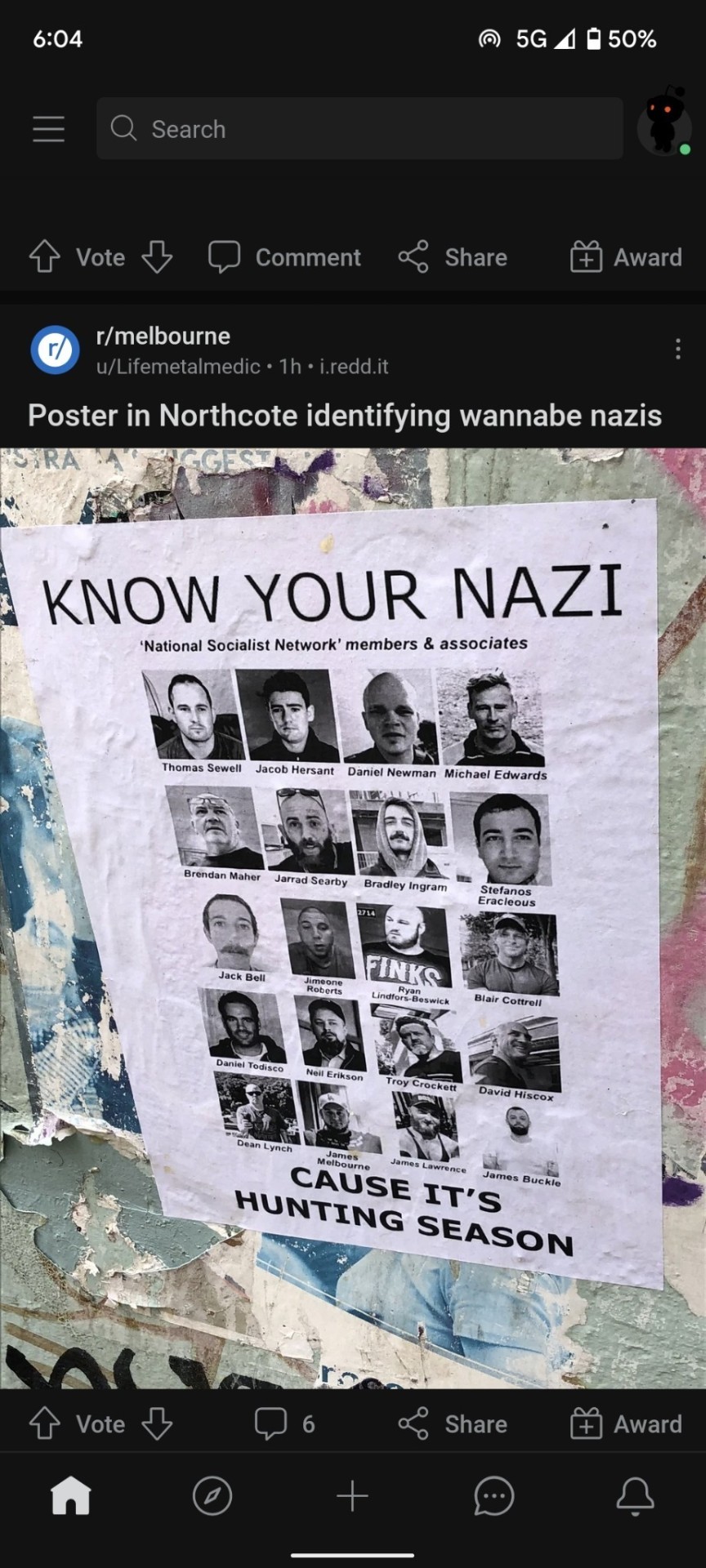









#neonazi#cliffordjennings#Christian Democratic Party#far right#extremists#wagga#nswpol#nswgov#new south wales#ausgov#politas#auspol#tasgov#taspol#australia#fuck neoliberals#nazisploitation#nazis#nazi#neofascism#bigot#hypocrite#neoliberal capitalism#anthony albanese#albanese government#fucknazis#class war#racism#racist#right wing extremism
0 notes
Photo

DANGEROUS COVID HYPOCRISY - State MP and Medical professional flaunt coronavirus restrictions posing a real risk to public health.
Over the weekend Dr. Joe McGirr attended a BLM protest - no mask and no social distancing. His wife - an orthopedic surgeon works at 2 local Wagga Wagga hospitals.
Here is a classic case of COVID HYPOCRISY.
Dr. Joe McGirr lectures the public about 'social distancing' and breaks the same rules last weekend. Go figure that one!
https://www.youtube.com/watch?v=X9-wLNlI5Y4
0 notes
Photo
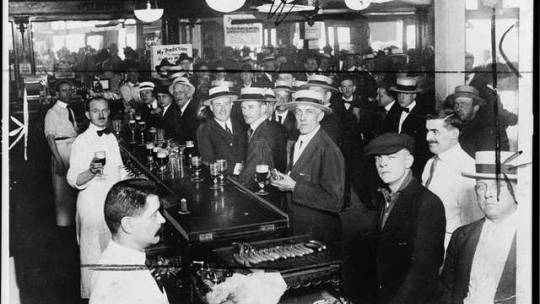
Lei Seca nos EUA: como lei de 100 anos atrás ainda influencia relação dos americanos com o álcool
Há cem anos, em janeiro de 1919, foi ratificada a 18ª emenda à Constituição americana, que proibia a manufatura, venda e transporte de "bebidas intoxicantes" nos Estados Unidos, dando início à "Prohibition Era" (a era da proibição). Ela abriu caminho para a Lei Seca, que entraria em vigor no ano seguinte (1920).
O "nobre experimento", como foi chamado, se estendeu por 13 anos, até a Lei Seca ser revogada, em 1933. Mas ainda hoje, um século depois, o legado desse período persiste, e milhares de americanos vivem em partes do país em que o comércio de álcool continua proibido.
Segundo a NABCA (Associação Nacional de Controle de Bebidas Alcoólicas, na sigla em inglês), centenas de localidades nos Estados Unidos ainda proíbem completamente a venda de álcool. Várias outras têm restrições parciais.
As leis sobre comércio e consumo de bebidas alcoólicas são diferentes não apenas em cada Estado, mas também nos condados (as subdivisões administrativas nos Estados americanos) e cidades, resultando em um emaranhado de regras.
Em certos Estados, há cidades que permitem a venda de álcool, mas estão localizadas dentro de condados "secos", onde o comércio é proibido. Outros não permitem que condados ou cidades tenham restrições ao álcool mais rígidas que a lei estadual. Há aqueles em que vinho e destilados só podem ser vendidos em lojas operadas pelo governo estadual.
Em algumas localidades, vinho e cerveja são liberados, mas destilados são proibidos. Em outras, é possível comprar cerveja para beber em casa, mas a venda bebidas alcoólicas em bares é proibida. Há locais em que somente restaurantes com determinado número mínimo de lugares podem vender álcool. Ou em que cerveja gelada só pode ser comprada em lojas especializadas e cervejarias - outros estabelecimentos, como lojas de conveniência, devem vender a bebida morna.
Alguns locais têm restrições à venda de bebidas alcoólicas aos domingos. Nesse caso, o motivo pode ser religioso, com o objetivo de reservar esse dia para culto. Mas há também razões econômicas, e essas restrições costumam ter apoio de lojas especializadas de bebidas que querem evitar custos extras com funcionários aos domingos, e também repelir a concorrência de mercearias e outros estabelecimentos onde é possível comprar álcool.
"(As regras) variam de lugar para lugar, mas há definitivamente um legado da Lei Seca", disse à BBC News Brasil a historiadora Lisa McGirr, professora da Universidade de Harvard e autora do livro The War on Alcohol: Prohibition and the Rise of the American State ("A Guerra contra o Álcool: Lei Seca e a Ascensão do Estado Americano", em tradução livre).
Qual a origem da Lei Seca?
A Lei Seca foi resultado de esforços iniciados no século 19, quando bebidas alcóolicas, até então amplamente aceitas nos Estados Unidos, começaram a ser vistas como problema, especialmente à medida que mais trabalhadores migravam das fazendas para fábricas, onde proprietários temiam que o consumo de álcool levasse a acidentes e queda de produtividade.
Entre outras motivações estavam uma interpretação rígida da Bíblia e a ideia de que o consumo de álcool era pecado, além de intolerância racial e religiosa.
"No Sul do país, após a Guerra Civil (1861-1865), havia também motivação racial, a tentativa de restringir o tipo de atividades de lazer a que os negros recém-libertados tinham acesso", disse à BBC News Brasil Joe Coker, professor da Baylor University, no Texas, e autor do livro Liquor in the Land of the Lost Cause: Southern White Evangelicals and the Prohibition Movement ("Álcool na Terra da Causa Perdida: Evangélicos Brancos Sulistas e o Movimento pela Lei Seca", em tradução livre).
"No Nordeste, mais industrializado, havia um sentimento anti-imigrantes, que associava o consumo de cerveja aos imigrantes e tentava estabelecer limites", salienta Coker. "O movimento também atraía muitas pessoas com ideias sociais progressistas, que viam o abuso de álcool como uma das causas da pobreza e de outros problemas urbanos."
O movimento reunia diversas organizações, entre elas a União Cristã de Mulheres pela Temperança. Com a popularização da campanha, muitas partes do país começaram a restringir a venda de bebidas alcoólicas bem antes da Lei Seca. O Estado do Maine aprovou sua proibição ainda em 1846. Quando a lei nacional entrou em vigor, mais de 30 Estados já tinham restrições próprias.
Problemas gerados pela proibição de álcool
A Lei Seca foi inicialmente recebida com entusiasmo por ativistas, mas logo suas limitações ficaram claras. A lei não proibia o consumo em si, mas sim produção, distribuição e venda, e brechas na aplicação e fiscalização fizeram com que muitos americanos conseguissem acesso a bebidas alcoólicas.
Em vez de acabar com vício, pobreza e corrupção, como desejavam seus defensores, a Lei Seca levou ao aumento nos índices de embriaguez e criminalidade. O consumo de álcool adquirido no mercado negro, mais forte e de baixa qualidade, levou a milhares de mortes e problemas como cegueira ou paralisia.
Bares secretos que vendiam álcool clandestinamente, chamados de "speakeasies", se espalharam pelo país. Somente em Nova York, calcula-se que chegaram a 100 mil. O lucrativo comércio ilegal, dominado por gângsters como Al Capone, levou a um aumento da violência e do crime organizado.
A economia também sofreu com os altos custos para garantir o cumprimento da lei, a eliminação de milhares de empregos após o fechamento de bares, restaurantes e destilarias e a perda de bilhões de dólares em impostos sobre venda de álcool que deixaram de ser recolhidos.
Diante desses problemas e com o país mergulhado na Grande Depressão, no início da década de 1930 o apoio à Lei Seca havia enfraquecido. Em 1933, no governo do presidente Franklin Delano Roosevelt, a 21ª emenda à Constituição revogou a 18ª emenda e acabou com a Lei Seca.
"Nem todo mundo ficou feliz com o fim da Lei Seca", ressalta McGirr. "Com o restabelecimento da venda legal de bebidas alcóolicas (em nível nacional), os Estados assumiram a responsabilidade de regular, e muitos decidiram manter suas proibições", observa.
Alguns mantiveram a proibição em todo o território. O Mississippi foi o último a abolir sua lei seca estadual, que vigorou até 1966. Outros permitiram que condados e cidades decidissem suas regras, e à medida que proibições estaduais foram desaparecendo, localidades em todo o país foram criando suas próprias leis, gerando a disparidade presente até hoje.
Efeito de Lei Seca na Costa Oeste dos EUA
Mesmo em locais sem proibição, determinadas restrições, como o horário de fechamento dos bares, podem gerar divisões. O exemplo mais recente é um projeto de lei apresentado no mês passado na Califórnia para permitir que nove cidades, entre elas Los Angeles e San Francisco, possam ampliar o horário de venda de bebidas alcóolicas.
Na maioria dos Estados americanos, o horário de venda de bebidas alcoólicas em bares, restaurantes e casas noturnas se encerra entre 2h e 4h. Mas em alguns, como Mississippi, o limite é 1h. No Alasca, 5h. Na Califórnia, a lei atual determina que esses estabelecimentos parem de vender álcool às 2h. Pela proposta, essas cidades ganhariam autonomia para decidir se querem ou não estender esse horário até 4h.
Caso optem pela ampliação do horário, as cidades terão de dialogar com moradores e elaborar planos de transporte e segurança pública antes de implementar a mudança. Poderão também limitar o horário ampliado a determinados bairros, dias da semana ou períodos do ano.
A ideia é que façam parte de um projeto piloto durante cinco anos. Após esse período, os efeitos seriam avaliados e a lei poderia ser renovada ou descartada.
A proposta, que tem apoio das prefeituras, indústrias de bares, restaurantes e turismo, câmaras de comércio e empresas de transporte por aplicativos, como Uber e Lyft, está sendo apresentada pela terceira vez. Na primeira, não avançou. Na segunda, no ano passado, foi aprovada no Legislativo, mas vetada pelo então governador, Jerry Brown, que citou o risco de aumento de motoristas embriagados, preocupação compartilhada pela polícia.
A esperança dos idealizadores é que o novo governador, Gavin Newsom, que tomou posse neste mês, sancione a lei caso seja novamente aprovada pelo Legislativo.
O senador estadual Scott Wiener, autor do projeto, critica o fato de que o "horário e rígido de fechamento" de bares e casas noturnas, às 2h, seja aplicado sem distinção tanto em pequenas comunidades rurais quanto em grandes centros urbanos na Califórnia e diz que isso asfixia a economia do Estado.
Os defensores da mudança lembram que outras grandes cidades no país permitem a venda de bebidas até bem mais tarde. Em Nova York, é permitida até 4h, mas casas noturnas podem ficar abertas até depois desse horário, sem servir bebidas. Em Miami, o horário é 5h, mas em alguns bairros os bares podem ficar abertos 24 horas. Em Nova Orleans, a venda de álcool é permitida 24 horas por dia, sete dias por semana.
Restrições ao álcool hoje
Segundo a NABCA, nos últimos anos tem sido observada uma tendência de afrouxar restrições ao álcool em áreas secas, e muitos condados e cidades com forte tradição histórica de proibição reverteram suas posições.
Opositores das restrições costumam destacar os benefícios econômicos de liberar o comércio de álcool, atraindo novos bares, restaurantes e turistas e gerando empregos. Também citam o fato de moradores serem obrigados a dirigir longas distâncias até chegar a uma cidade ou condado em que possam comprar um drinque, o que pode aumentar o risco de motoristas embriagados e de acidentes.
Coker observa que em algumas regiões, especialmente no Sul dos Estados Unidos, com grande população religiosa, o consumo de álcool ainda é visto como tabu, mas acredita que isso vem mudando com as novas gerações.
"O protestantismo evangélico conservador ainda é forte nessas áreas, mas não tem a mesma influência de 50 ou 100 anos atrás", ressalta. "Estamos vendo muitos condados que foram secos nos últimos cem anos ou mais começando a permitir a venda de álcool."
Fonte: BBC News Brasil
0 notes
Text
Boatyard Distillery Double Gin
let’s begin
An exciting distillery in the west of Ireland, Boatyard Distillery has a lot to offer. Their Double Gin is especially exciting.
New Irish Distilleries
Irish distilleries appear to be popping up all the time. This one, technically based in Northern Ireland, is found on the shores of Lough Erne, in Enniskillen. Despite its Irish roots, it was founded by Joe McGirr, who was once COO of The London Distilling Company. So he definitely knows his stuff.
Boatyard was first opened in 2016 and they have produced three spirits so far; Double Gin, Old Tom Gin and Boatyard Vodka. They pride themselves on the quality of the organic ingredients they use. Of course it’s hard to make yourself stand out when it comes to gin these days, but they have an interesting edge over the competition.
Their Double Gin is so called as it is filtered through juniper berries before its first distillation. This gives an added kick of juniper notes throughout and adds a really rich quality to the flavour of the gin. This is a technique typically used by Dutch distillers and not so often seen in the UK or Ireland.
With innovation like this, we’re excited to see what else comes from Boatyard.
Boatyard Distillery Double Gin
As well as the extra distillation through juniper, Boatyard Double Gin is also infused with botanicals like sweet gale (bog myrtle), coriander and angelica root. Most ingredients are locally sourced and Boatyard strives to carry out all aspects of the production process as close to home as possible.
Buy Now
Tasting notes for Boatyard Double Gin
Bottle cost: £37.05
This is some of the finest gin around. The nose begins with a hearty kick of juniper and lemon peel. They use fresh unwaxed lemons in their recipe, so it makes sense that the body is lemon forward. The citrus notes with the intensity of the juniper is brilliant.
The palate brings in more pine needles and fresh cut grass, giving it a lovely refreshing note. There is a slight spiciness and a really bright aromatic note on the body as well.
The finish is strong and full of zesty citrus notes.
Boatyard have been innovating from the get go and their Double Gin is a testament to their focus on quality. They are leading the pack of new Irish gin distilleries and its easy to see why.
Do you enjoy Boatyard gin? Start the conversation in the comments!
The post Boatyard Distillery Double Gin appeared first on GreatDrams.
from GreatDrams https://ift.tt/2zJ2XB2
Greg
0 notes
Text
Grieving families endure delays burying loved ones due to lack of autopsy services at regional hospitals
Posted November 10, 2018 12:55:42
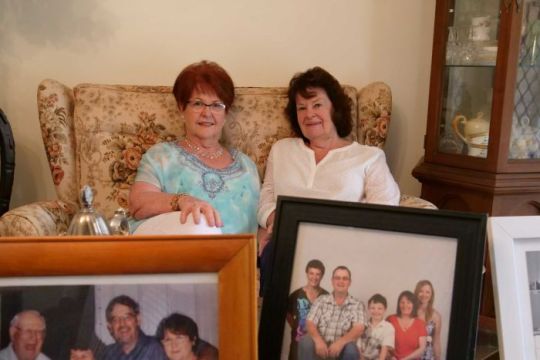
Photo: Jill Jones and Gloria Schultz waited more than two weeks to be able to bury their sons (ABC News: Rosie King) Related Story: Funeral delays in far west NSW as post-mortems conducted 1,100km away Map: Gundagai 2722
Burying a loved one is never easy but a lack of autopsy services in regional New South Wales is causing families to suffer through lengthy delays before being able to say their final goodbyes.
"It was 16 days after Mark died that we could finally lay him to rest," Jill Jones said.
"Just him passing away was bad enough but then having to sit around waiting, not being told anything it was just not on."
Mrs Jones' son, Mark, died last year at the age of 52 after swerving to avoid a kangaroo and hitting an embankment in Gundagai in the Riverina region.
His death was unexpected and not due to natural causes, which meant a coronial autopsy was required to determine the exact cause of death.
Until 2016, medical officers who were not specialist forensic pathologists could perform coronial autopsies at some regional hospitals in NSW.
But since then, the system has become centralised and specialised so the procedure can only be performed by forensic specialists which are in short supply worldwide in facilities in Sydney, Newcastle and Wollongong.
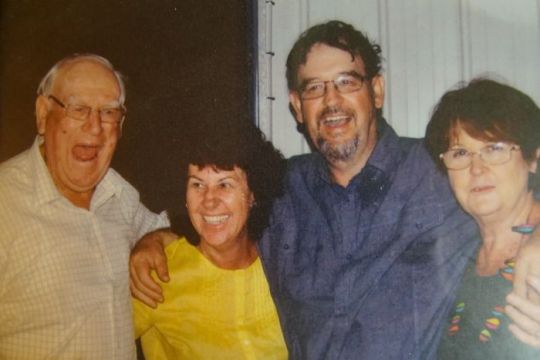
Photo: Mark Jones with his parents, Bronc and Jill, and his sister Jayne. (ABC News: Supplied) Making tragic times even worse
Because Mark died after the change, instead of being taken to Wagga Base Hospital 45 minutes away, his body was transported 600km north to Newcastle, which is the case for most unexpected deaths in the Riverina.
Mark's body was returned to his family more than two weeks after the day he died.
"Mark's body lay in hospital for four days until they could organise a contractor to take him all the way to Newcastle," Mrs Jones said.
"Not being anywhere near them, knowing they've died tragically and thinking of them being shoved from pillar to post, it was just terrible."
Sadly, Mrs Jones' story is not unique.
Gloria Schultz's son, Dean, was 45 when he committed suicide two years ago at her home in Cootamundra.
His body also lay in a local hospital for four days before being transported to Newcastle for a coronial autopsy.
"For 16 days, we sat and waited," Mrs Schultz said.
"It's a terrible journey and all you can think about is them being treated like a bag of wheat, moving from one spot to another.
"We couldn't really plan anything for his funeral until we knew when we'd get him back either, and all I wanted was my boy at home."
Efficiency is the goal
Most coronial autopsies are carried out within 24 to 72 hours of a body being admitted to a facility, NSW Health Pathology said in a statement.

Photo: The entrance to John Hunter Hospital, where the Newcastle facility is located. (ABC News: Dan Cox)
"The present model provides the most efficient and effective use of our available highly specialised staff and the technology available," the statement said.
"Our service is now in line with modern, best practice and ensures we can provide high quality care, compassion and dignity for our deceased patients."
Mrs Jones finds that difficult to accept.
"I'm just wondering, have they spoken to a family who has had to have their loved ones carted all the way to Newcastle and wait more than two weeks to bury them?" Mrs Jones said.
"Are we second-class citizens in the country? We should not be treated this way and neither should our loved ones."
Mrs Schultz vehemently agrees.
"I'm absolutely appalled we have to go through this because we live in a country area," Mrs Schultz said.
"I just don't know where the heart of the health department is."
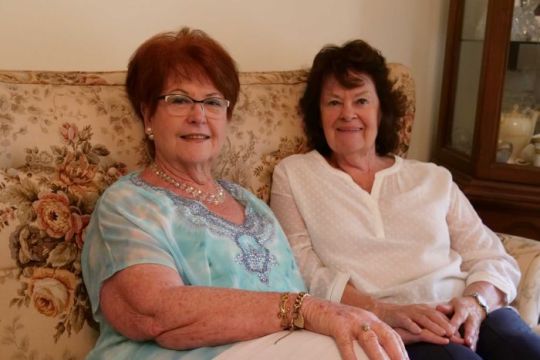
Photo: Jill Jones and Gloria Schultz are calling for change to the autopsy system. (ABC News: Rosie King) Not good enough
It is a sentiment Wagga Wagga's newly-elected Independent MP Dr Joe McGirr also shares.
"The bottom line is that for country people to face these delays is just not acceptable, and it's one of those issues that makes them feel second-rate," Mr McGirr said.
"I cannot believe and simply don't accept that we can't make this process better.
"I realise there's a workforce shortage, but simply saying everything has to be centralised and not taking into account the impact it's having on grieving families and communities, that's just not good enough."
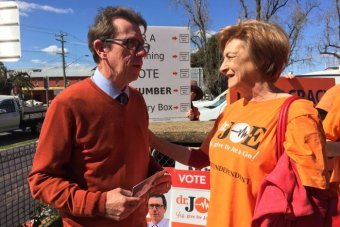
Photo: Independent MP Dr Joe McGirr is pushing for improvements. (ABC News: Verity Gorman)
The former GP has requested a full investigation by NSW Health Pathology into the delays and said he is committed to bringing about change.
"I think the message is that efficiency and outcomes are more important than caring, and that's just not on," Mr McGirr said.
"Whether the solution is to fly in forensic pathologists or use remote support for local doctors, I'm not sure.
"We do have telehealth in many different areas. We've got sophisticated communications systems. Surely we can organise it so that we could partly train local practitioners."
A change to the current system will not change what the Jones and Schultz families have already been through but the women said they will do anything to help other families from having the same painful wait.
"I don't want anyone else to experience the pain, the suffering, the waiting of those long days and nights," Mrs Schultz said.
Topics:death,forensic-science,health,grief,gundagai-2722,cootamundra-2590,wagga-wagga-2650,newcastle-2300
http://www.abc.net.au/news/2018-11-10/regional-autopsies-lacking-causing-pain-for-families/10470636
0 notes
Text
Labor concedes Wagga to 'humbled' McGirr
Labor concedes Wagga to ‘humbled’ McGirr
Labor’s candidate in the Wagga Wagga by-election has conceded defeat to his independent rival, Joe McGirr, while warning the NSW government it is facing a “catastrophic” general election in early 2019.
Dan Hayes says he called Dr McGirr on Monday because “unless something miraculous happens” preferences will deliver victory to the local doctor when the result is announced on Thursday.
Mr Hayes…
View On WordPress
0 notes
Text
'He's a certain winner': Antony Green calls Wagga Wagga by-election for independent Dr Joe McGirr
http://www.abc.net.au/news/2018-09-09/antony-green-calls-by-election-for-joe-mcgirr/10219584
0 notes
Text
Wagga wipeout: NSW premier concedes defeat Liberals lose seat they have held for more than 60 years
The Liberal Party has lost the seat of Wagga Wagga, according to predictions (Pictured: candidate Julia Ham)
New South Wales premier Gladys Berejiklian on Sunday conceded defeat in the Wagga Wagga byelection, saying she believes independent Joe McGirr will secure enough votes to take the seat from the Liberals.
The Liberal Party will lose the seat 60 years after they first won it in 1957.
Wh…
View On WordPress
0 notes
Text
Decision time in Wagga Wagga
Decision time in Wagga Wagga
Skip to sections navigationSkip to contentSkip to footer
Advertisement
19 ImagesThis weekend's by-election in the traditionally safe NSW State Liberal seat of Wagga Wagga now hangs on a knife's edge as independent candidate Dr Joe McGirr looms as the biggest threat. All photos by Nick Moir.9 September 2018 11:17am1/19
Dr Joe McGirr and his wife Kerin Fielding celebrate what looks to be a victory in the Wagga by-election.Photo: Nick Moir
2/19
Dr Joe McGirr celebrates what looks to be a victory in the Wagga Wagga by-election.Photo: Nick Moir
3/19
Julia Ham concedes defeat in the Wagga Wagga by-election.Photo: Nick Moir
4/19
Julia Ham concedes defeat in the Wagga Wagga by-election.Photo: Nick Moir
Advertisement
5/19
Julia Ham concedes defeat in the Wagga Wagga by-election.Photo: Nick Moir
6/19
Worried faces at Liberal Party results party as the first booth results start coming in.Photo: Nick Moir
7/19
Happy faces at Labor results party as the first booth results start coming in.Photo: Nick Moir
8/19
A very happy Dan Hayes talks to supporters after a huge improvement in Country Labor vote.Photo: Nick Moir
9/19
Gladys Berejiklian with Julia Ham at a polling venue this morning waiting for early voters to arrive.Photo: Nick Moir
10/19
Independent candidate Dr Joe McGirr casts his vote at South Wagga Primary School.Photo: Nick Moir
11/19
Labor leader Luke Foley with voters at Kooringal Public School.Photo: Nick Moir
12/19
Deputy PM and Nationals leader Michael McCormack hands out how to vote cards with Julia Ham at the Ashmont Primary School voting station.Photo: Nick Moir
13/19
Federal Liberal senator Jim Molan at the Turvey Park Primary School polling booth.Photo: Nick Moir
14/19
Deputy PM and Nationals leader Michael McCormack chats with arriving voters.Photo: Nick Moir
Advertisement
15/19
Dan Hayes with Luke Foley at the Glenfield Park Scout Hall booth.Photo: Nick Moir
16/19
The general scene at the Turvey Park Primay School Booth.Photo: Nick Moir
17/19
Independent Dr Joe McGirr casts his vote.Photo: Nick Moir
18/19
Dan Hayes and Luke Foley have a quiet word at the Glenfield Park Scout Hall booth.Photo: Nick Moir
19/19
NSW Premier Gladys Berejiklian out chatting to voters this morning.Photo: Nick Moir
https://www.watoday.com.au/national/nsw/decision-time-in-wagga-wagga-20180908-h15407.html?ref=rss&utm_medium=rss&utm_source=rss_feed
0 notes
Text
NSW govt on track to lose Wagga Wagga
NSW govt on track to lose Wagga Wagga
NSW Premier Gladys Berejiklian expects independent Joe McGirr to take the seat of Wagga Wagga from the Liberal party for the first time in almost 60 years.
Counting from Saturday’s by-election is continuing, with a projected swing of about 29 per cent against the government, spelling a historic loss.
“It’s likely that we’ll get the highest primary vote, but, of course, not enough to hold the…
View On WordPress
0 notes
Text
NSW Liberals set to lose Wagga Wagga byelection on swing of 29%
Federal leadership spill has angered voters, the party admits, as the ultra safe seat heads to independent candidate The NSW Liberal party is almost certain to lose the seat of Wagga Wagga for the first time in almost 60 years as the messy leadership spill in Canberra cost votes in a state byelection. Early results on Saturday night suggested the Liberals were bracing for defeat in the regional seat with independent candidate Dr Joe McGirr leading as the favourite and Labor tracking second. Continue reading... https://www.theguardian.com/australia-news/2018/sep/09/nsw-liberals-set-to-lose-wagga-wagga-byelection-on-swing-of-29?utm_source=dlvr.it&utm_medium=tumblr
0 notes